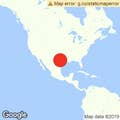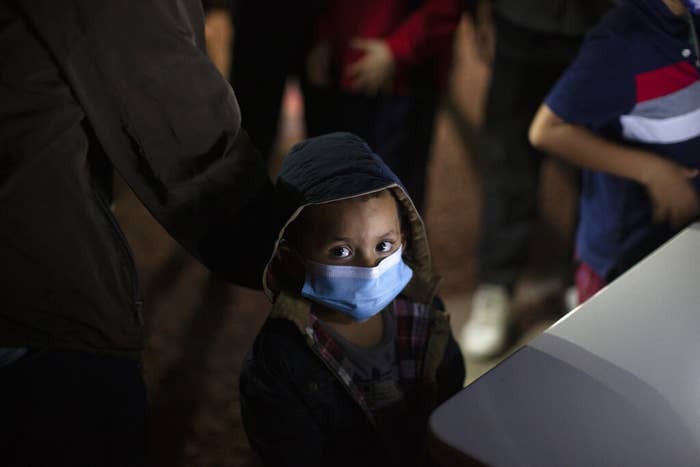
REYNOSA, Mexico — In March, US border authorities took 18,890 unaccompanied immigrant children from Central America into custody, the largest monthly figure on record — but advocates said the number is driven in part by Trump-era policies that the Biden administration has kept in place.
Another big reason for the escalating numbers, experts say, is that desperate immigrants who have sold everything back home to make the journey are trying to cross the border more than once after initially failing to enter the US asylum system. Single adults made up about 58% of all undocumented immigrants encountered at the border, and the vast majority of them were expelled, senior administration officials said.
"Nearly all are expelled back to Mexico without being allowed to seek asylum, causing many to cross repeatedly, further driving up apprehensions and producing headlines about the highest number of encounters in decades," said Aaron Reichlin-Melnick, policy counsel at the American Immigration Council.
Overall, the number of immigrants who crossed the southern border in March was more than 172,000, the highest level for any month in at least 15 years. However, most of them were immediately sent back to Mexico or their home countries under Title 42, an obscure public health law the Trump administration used to immediately send immigrants encountered at the border back to Mexico or their home countries, effectively blocking anyone from accessing the US asylum system.
In November, a federal court ordered the government to stop applying Title 42 to unaccompanied children. Even though an appeals court later gave President Joe Biden the ability to continue the practice, the White House chose not to. By then, a growing number of immigrants fleeing extreme poverty, violence, malnutrition, and corrupt governments had made their way to the US–Mexico border. Some believed Biden would be more friendly or were told by friends and smugglers that immigration policies had changed. Yet they were instead confronted with the same Trump-era restrictions.
Having children cross the US–Mexico border alone, despite having traveled to the region with a parent, is one of few avenues into the US. Parents, stranded in some of Mexico's most dangerous border cities and unsure of when they would be able to cross together as a family, have opted to let their children head to the US without them.
The March figure of 18,890 unaccompanied minors was nearly double that of February's 9,431.
Customs and Border Protection declined to comment on how many unaccompanied children taken into custody in March had previously been immediately sent back to Mexico with a parent under Title 42.
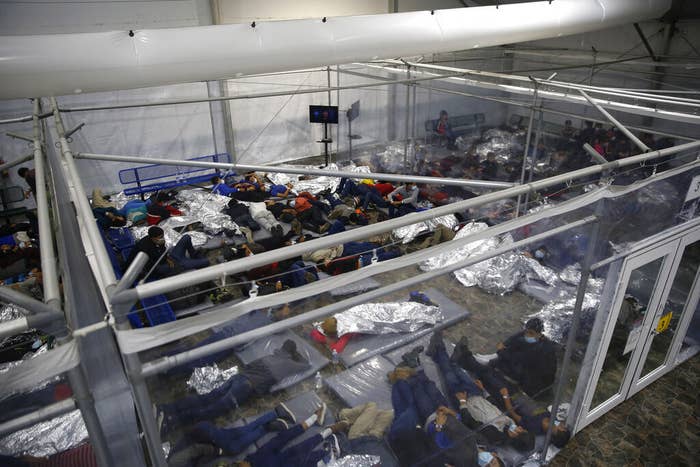
Elena, a Honduran asylum-seeker who was expelled back into Mexico in February with her son, decided to let her 17-year-old cross alone in March. She hopes to one day reunite with him in the US but is unsure of when that might be.
She and her husband are currently waiting in Reynosa, a city where hundreds of immigrants and asylum-seekers have been expelled, for border policies to change. The family left Honduras, Elena said, after gang members tried to get her husband to work for them selling drugs. Her husband refused, and members of the gang later hit him with their car. He is still injured and uses crutches, she said.
Her son will eventually be sent from a Border Patrol facility to the custody of the Office of Refugee Resettlement, which cares for unaccompanied immigrant children in its now-overtaxed system of shelters.
"When we came to the border, we never thought we would have to separate," said Elena, who asked to be identified only by her first name. "I'm stressed. I want to be with my son, but I can't figure out how to do it."
Meanwhile, the number of unaccompanied immigrant children being sent into US custody has overwhelmed the system meant to process them. The few glimpses of inside the CBP detention facilities show overcrowded holding areas; children have reported that for days they have been unable to shower or call their parents. There also aren't enough beds at government-run shelters and other sites to get the children out of the cramped border facilities.
On a call with reporters Wednesday, Biden administration officials said they have been making progress, including opening up more emergency intake sites. The daily average number of children transferred out of Border Patrol facilities increased from 276 at the end of February to 507 a month later.
"We are moving in the right direction, but we know we have a lot of work ahead," an official said.
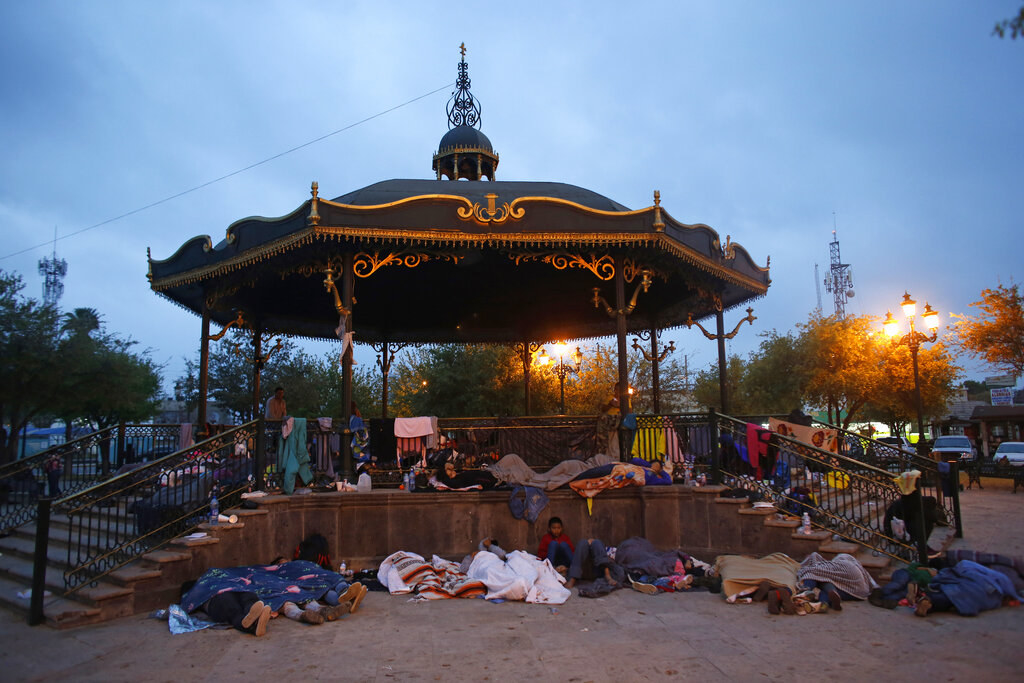
About 60%, or roughly 103,900 immigrants, were immediately expelled from the US. Comparing the record 172,000 border crossings to those of previous years doesn't make sense, advocates have said, because in the past they would have been processed. Now, most immigrants are being expelled, and many of them — 28% of the 103,900 — were people who had previously tried to cross.
Charlene D’Cruz, director of Lawyers for Good Government’s Project Corazon, which has provided legal services to immigrants and asylum-seekers in Mexico, said it's an apples-to-oranges comparison. Unlike previous years, border officers are not processing them into their custody but are instead quickly sending them back to Mexico.
Title 42 is only the latest barrier the US has placed in front of asylum-seekers that has forced thousands to wait in Mexico, D'Cruz said. Before, it was the so-called Remain in Mexico policy; before that, it was regulating how many immigrants border agents could allow to enter the US to seek asylum, a process known as "metering.”
"The government thinks people are just going to go away if they say no to them 10 times, but what they're really doing is causing a buildup in Mexico," D'Cruz said.
Immigrants stuck in Mexico will look for the few pathways into the US, such as sending their kids across the border alone as unaccompanied minors, she added.
"The United States can deal with asylum-seekers in an orderly fashion. The fact that they're allowing some into the US proves that," D'Cruz said. "They should be doing their fucking jobs. They can't just close the border."
A Biden administration official said they are aware of the practice of parents in Mexico sending their children across the border alone.
"We have seen some cases where there is self-separation, where families who don't make it through will send a child on their own," the official said. "Our message to unaccompanied children and families, and families with tender age children, is that, you know, now is not the time to come."
The messaging from the Biden administration, telling families not to make the journey to the border, is something that has been heavily discussed in the US, but that messaging isn't getting through and wasn’t effective even for Trump.
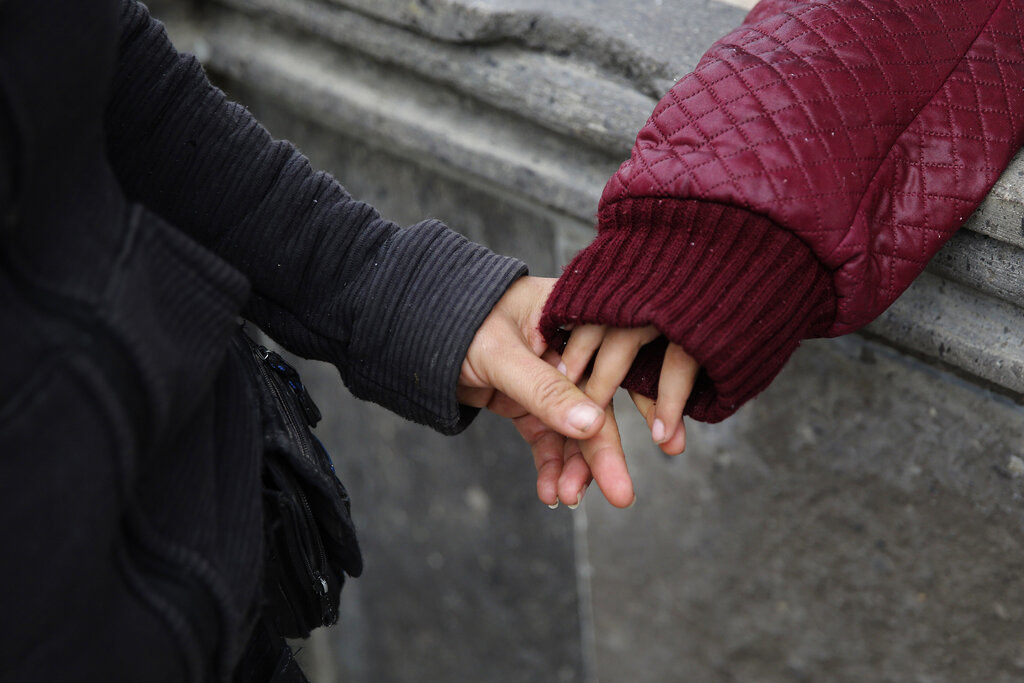
Elvin, a Honduran asylum-seeker and LGBTQ activist who was sent back to Mexico last month, said in addition to the speculation that the Biden administration is more welcoming, he has heard from smugglers and friends in the US that the border is open.
"Honestly, they only tell us that the borders are open and that they're letting families with children into the US," he told BuzzFeed News.
But the policies on who is allowed into the US are complicated. Most immigrants don't know the details.
Elvin said he was being persecuted by the Honduran government for his advocacy and that the conditions back home were ultimately driving people to leave.
Out of the more than 52,904 immigrant families who crossed the border in March, 35,559 — or about 67% — were allowed into the US. The others — 17,345, or about 33% — were expelled into Mexico or to their countries, a Biden administration official said.
The Biden administration said it has started to accept a majority of families because officials in the Mexican state of Tamaulipas, which is across from Texas and where many families cross the border, are refusing to take back parents with children ages 6 and under. The age cutoff can mean the difference between being allowed to seek asylum in the US or being sent back to Mexico.
But even if parents cross with a child who is 6 or younger, they can still be sent back to Mexico. This was the case for E. Aguilar, a 36-year-old asylum-seeker from Honduras who was among the more than 17,300 families expelled in March. He crossed into the US near McAllen, Texas, after a smuggler took him and his 5-year-old son across the Rio Grande on an inflatable raft. The smuggler told them to walk more than a mile to where Border Patrol agents were processing immigrants under tarps.
After being held for two days in crowded border facilities, Aguilar, who asked that he only be identified by his first initial and last name, was boarded onto a plane. He thought they were going to be deported to Honduras, but they were told they were going to El Paso, Texas. When they landed, a border officer told the group to walk along a fence and across a bridge. For a moment, Aguilar thought they would be allowed to stay in the US.
"We crossed the bridge and saw a sign that said 'welcome to Ciudad Juárez.' That's when we all realized we were in Mexico," Aguilar told BuzzFeed News. "We weren't given any explanation, only false hope."
To get around the limitations the Mexican government has placed on its ability to expel families, the Biden administration has been flying families to parts of the border like Ciudad Juárez and Tijuana, where Mexico will take them. Aguilar and a group of mothers with young children were sent to a city known for its kidnapping and attacks on immigrants.
"Everybody was crying, mothers with newborn children in their arms," Aguilar said. “Parents who sold everything in Honduras to make it to the US were lost in a new city with no money and nowhere to go.”
Aguilar and two mothers were able to rent a hotel with the help of one of their husbands in the US.
"The coyotes don't tell you how it really is," Aguilar said. "They tell people that families are crossing, but that's not true for everyone. All the coyotes care about is making money."
In Reynosa, dozens of recently expelled immigrants sat outside an international bridge that connects to McAllen, trying to figure out their next move. Mirna, 31, sat next to a group of mothers while her 8-year-old son napped in her lap.
It was only after being expelled that she learned the US was only taking families with children ages 6 or younger, she said. Mirna, who asked to only be identified by her first name, said she was fleeing poverty and violence in Honduras.
"Nobody told us it would be like this," she said.

